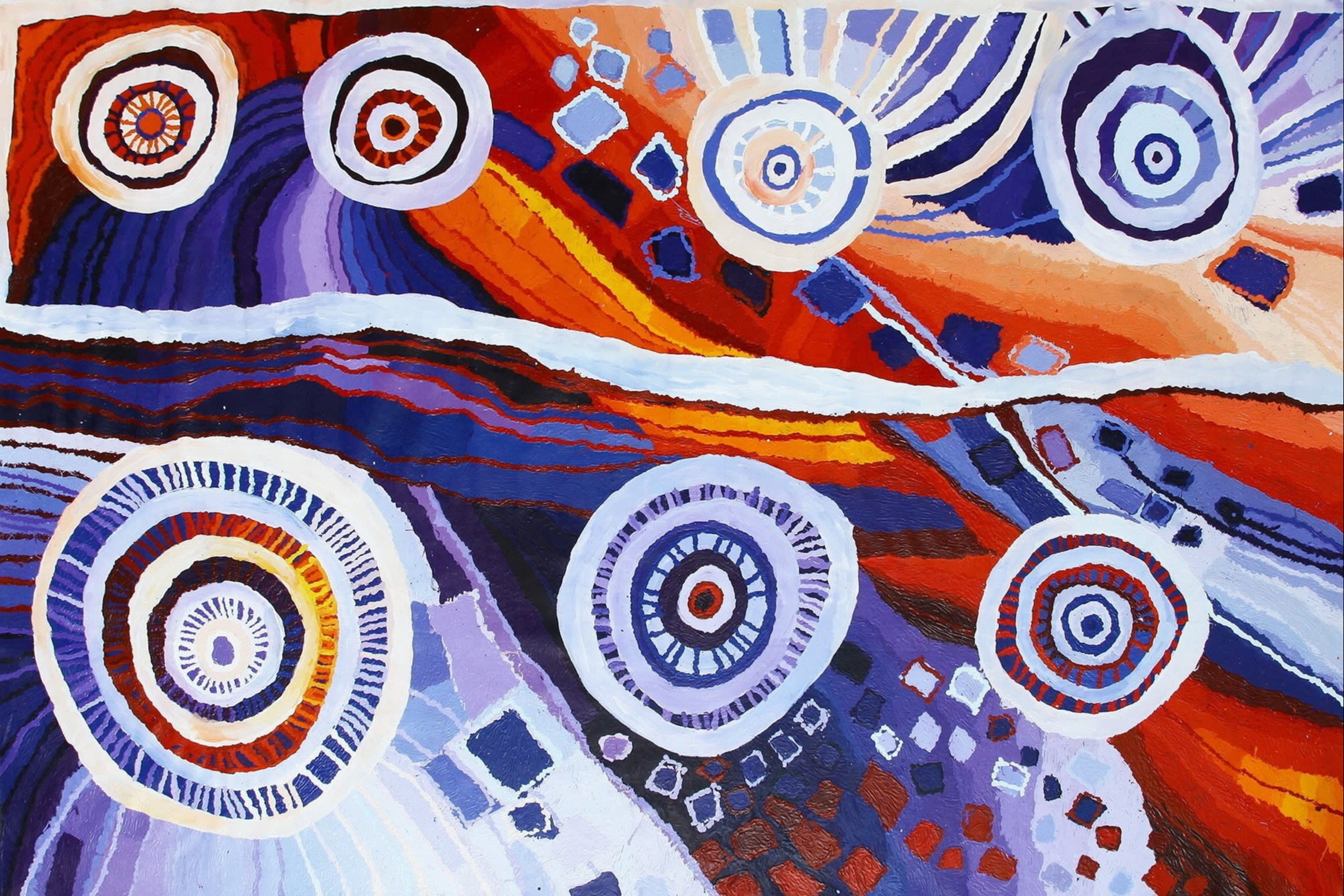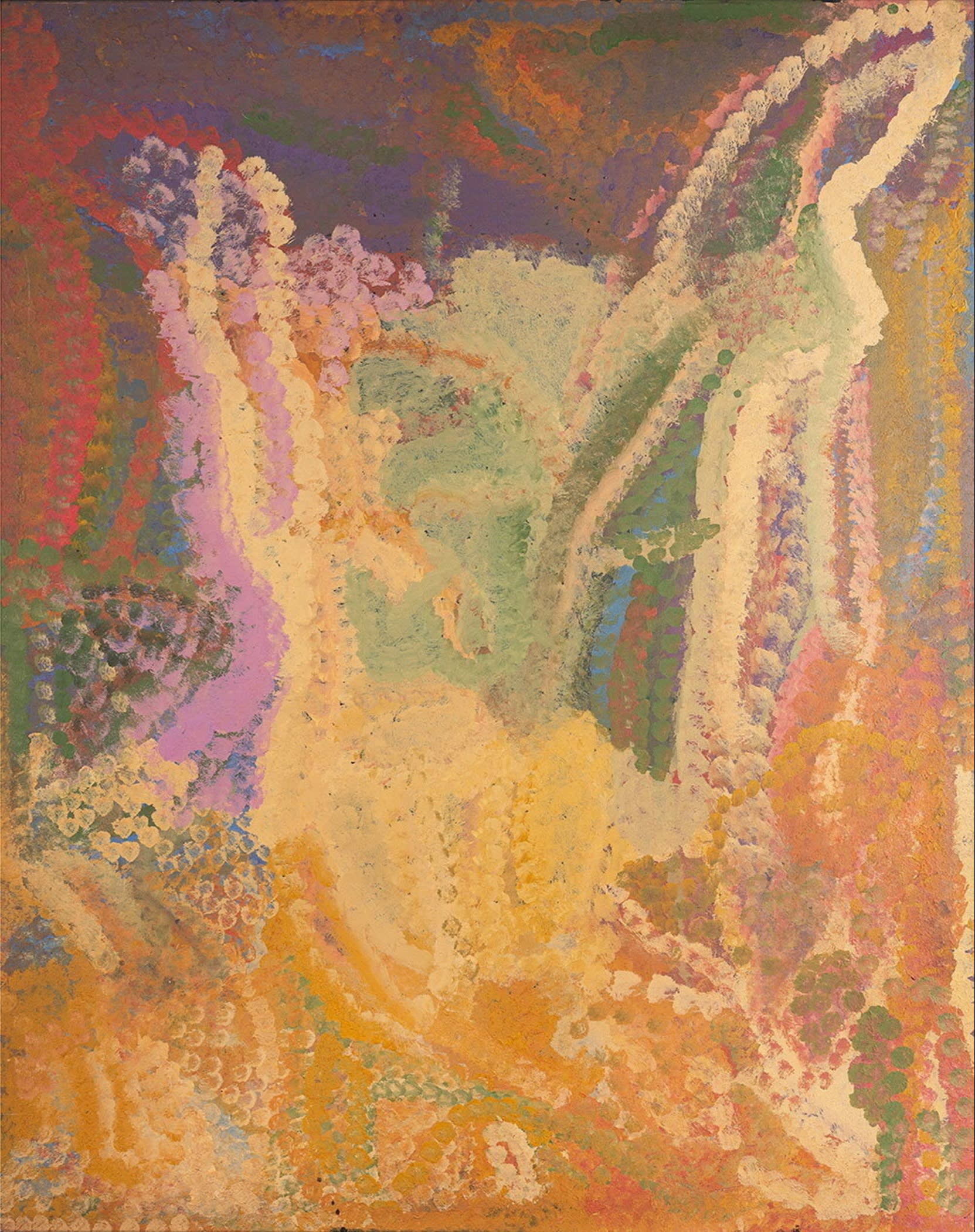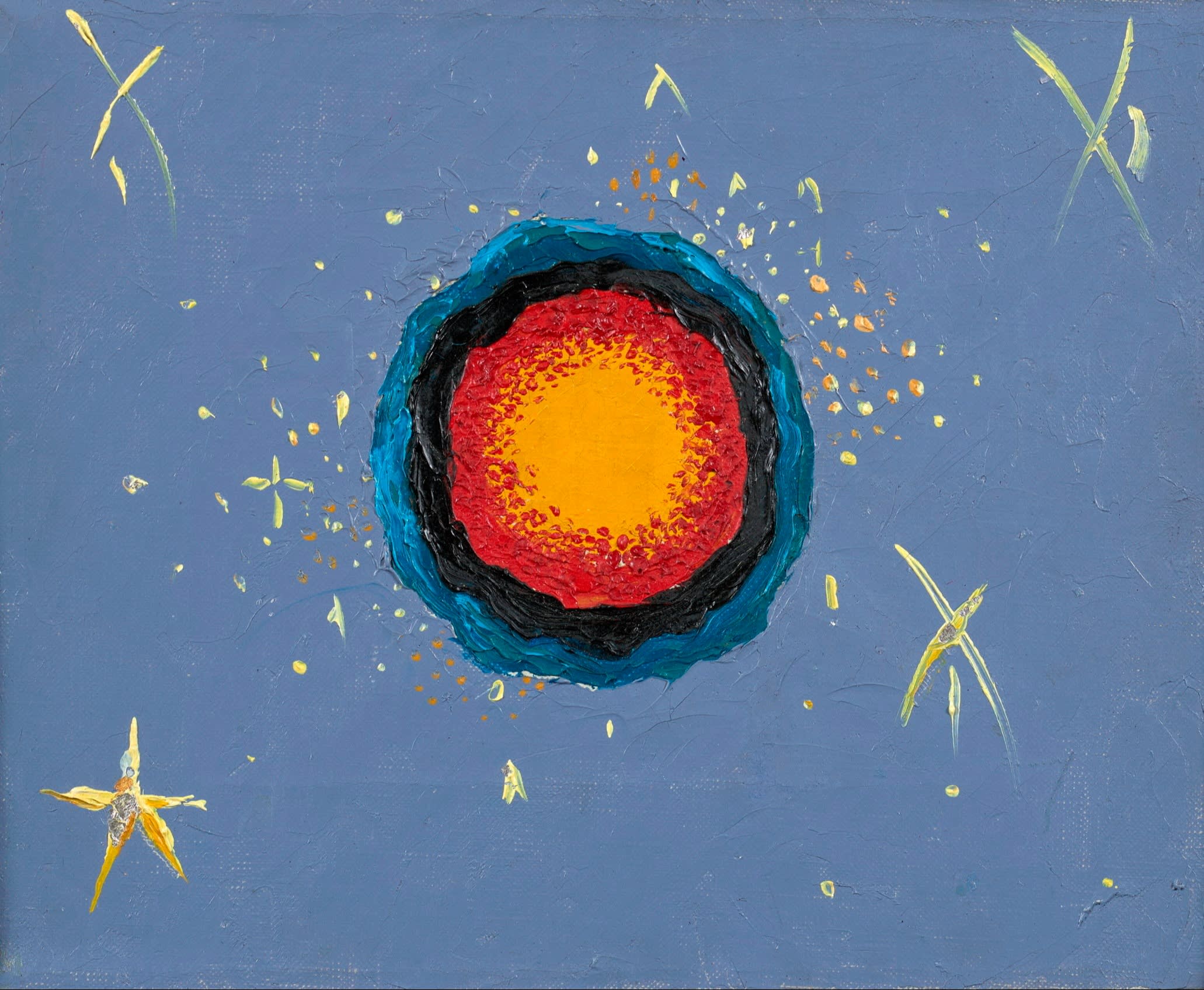Unlock the Editor’s Digest for free
Roula Khalaf, Editor of the FT, selects her favourite stories in this weekly newsletter.
This summer, Tate Modern will hold a major exhibition celebrating Australian artist Emily Kam Kngwarray (1910-1996) — the first large-scale presentation of her work to be held in Europe. Eight of the pieces on show come from the French-born, Swiss-based collector, Bérengère Primat, who has established Fondation Opale, a private museum in Lens, Switzerland, dedicated, she says, to the “recognition of contemporary Aboriginal art as an important movement in its own right in the contemporary art world”.
Primat was born in Neuilly-sur-Seine in 1973, the eldest of eight children in one of France’s wealthiest families (her father was billionaire Didier Primat, director and shareholder of oilfield services company Schlumberger). After studying hospitality management in Lausanne, Primat looked after a family-owned hotel in South Carolina for a few years before returning to Switzerland. In 2018 she established the foundation in the Swiss Alps to show her collection of contemporary Aboriginal art.
She speaks to me from her home, a mountain chalet close to the foundation. Behind her is a large abstract work of spiralling reds and yellows by Beryl Jimmy, “Nyangatja Watarru” (2017).
I discovered Aboriginal art before even going to Australia. I saw a show in a small gallery in Paris’s Marais district, Wati: Les hommes de loi, in 2002. Even now, I can’t really explain what happened, but it was an overwhelming experience. It inhabited me and has become stronger as the years pass. I bought two works as well as the catalogue and subsequently met the curator, Arnaud Serval, who took me to Australia for the first time. He spends half of each year in Aboriginal communities, and half in France. This opened a door to a world which I didn’t know and, ever since, I have returned to Australia every year.
I couldn’t live without my whole collection and I couldn’t possibly pick out just one piece. Each has a kind of presence and rhythm, and together they form a chorus. But the most important thing is the creation of these works — they are often collaborative and, even if I didn’t have the collection, I would keep their memory.

I didn’t want to put my own name on the foundation. I initially thought of giving it an Aboriginal name, but there are over 100 languages and it would be complicated to choose just one. Opals have a mythical place in Aboriginal culture; the word is the same in most languages; and, finally, the outside of the building has glassed windows [photovoltaic panels] and under some lights you see many colours reflected in it, as in an opal.
When I started two decades ago, if this art was shown at all in the west, it tended to be in ethnographic museums. There were a few commercial galleries [that specialised in it] but few survived. Today you see Aboriginal art in contemporary art museums, because it is contemporary, often by living artists. It is significant that in 2022, when Sydney’s Art Gallery of New South Wales Art opened its new extension, Aboriginal art was put on the ground floor and is one of the first things you see on entering. In addition, major commercial galleries are now showing this art — for example, Pace is holding an exhibition in London at the same time as Tate.
I rarely have regrets, but I did want to buy a work by Clifford Possum Tjapaltjarri, the beautiful “Ancestorial Tales of Mount Allen Sites — Yuutjutiyung” (1979). It was one of the few by the artist not already in a museum. I went to see it, but I was not prepared to pay the price the American owner wanted. So it sold to someone else, who I discovered to my surprise, was a Swiss collector, Bruno Raschle. I was a bit upset at first, but finally I thought: that’s great, someone else appreciates it and it increases the number of people who know and love this art.

For Tate Modern’s Emily Kam Kngwarray show, Kelli Cole and Kimberley Moulton — curators at Tate — knew my collection and asked for the loans. I had already lent pieces to the National Gallery of Australia in Canberra for their exhibition of Emily Kam Kngwarray in 2023, and we now have a partnership with Tate; after it ends in January next year, the show will travel to my foundation. I hope this project will pave the way for other Aboriginal artists to become better known.
At Fondation Opale, Beneath the Reflections of the World opens on June 15 and features the work of Forrest Bess and Sally Gabori. Bess (1911-1977) was an American fisherman and painter influenced by Aboriginal rituals. Gabori (1924-2015) represented Australia at the Venice Biennale in 2013. Both artists explore identity and transformation; the exhibition confronts Bess’s intimate, symbol-rich paintings with Gabori’s vibrant, large-scale works rooted in her deep connection to Bentinck Island in Australia.

Find out about our latest stories first — follow FT Weekend on Instagram, Bluesky and X, and sign up to receive the FT Weekend newsletter every Saturday morning
